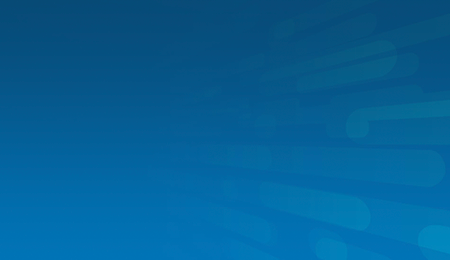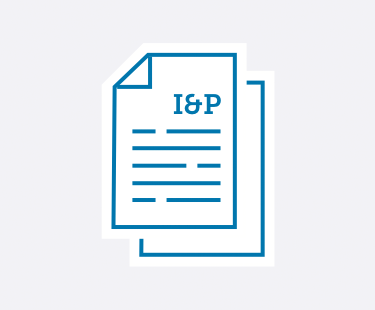

Learn practical strategies to handle emerging trends and leadership challenges in private schools.
No matter if you’re a School Head, Admission Director, Development Director, Board member, or any other private school administrator—Ideas & Perspectives®, ISM’s premier private school publication, has strategic solutions for the pervasive problems you face.
- Tuition not keeping pace with your expenses? In I&P, explore how to use strategic financial planning to create your budget and appropriately adjust your tuition.
- Enrollment dropping off? Discover how to implement the right admission and enrollment management strategies that engage your community—and fill your classrooms.
- Trouble retaining teachers? Learn how you can best support your teachers using ISM’s Comprehensive Faculty Development framework. Your faculty members will become more enthusiastic about their roles—which ultimately improves student outcomes.
- Fundraising campaigns not as successful as you’d hoped? Implement ISM’s practical advice and guidance to build a thriving annual fund, construct an effective capital campaign, and secure major donors—no matter your community size or location.
- Not sure how to provide professional development—for you and your staff? Learn ways to develop and fund a successful professional development strategy. You can improve teacher-centered satisfaction and growth, which in turn strengthens student-centered learning.
- Problematic schedule? You can master the challenges of scheduling with the help of ISM’s practical advice, based on our experience with hundreds of schools and our time-tested theories.
- And so much more.
I&P has shared targeted research, up-to-date insight, and sound theory with school leaders since 1975. More than 8,500 private school decision-makers find the answers to their schools’ administrative and governance matters in our advisory letter. We give you the strategic answers you need.
As an ISM Silver or Gold member, you not only receive issues online and in print 10 times a year, but you have access to 900+ articles in our web archive. Need help? It’s at your fingertips! Learn more and sign up for ISM's membership here.
Search
See the articles from our latest issue of Ideas & Perspectives.
Scheduling the 21st Century Service Learning Program
Volume 40 No. 14 // November 2, 2015
In 2008, the National Youth Leadership Council articulated “The K–12 Learning Standards for Quality Service Learning Practice.” ISM both endorses and replicates them here, recognizing that such standards have to meet and be influenced by your school’s mission. Service learning is now a norm in upper, middle, and lower schools. Most Division Directors believe, as a result of each school’s and division’s mission statements, that service learning is a key part of children’s education. Scheduling the program, however, can be challenging. It competes for time with the school’s primary task of providing an academic education, asks teachers to carry out yet another function, and can be disruptive as students miss class or use class for tangential projects. Clearly, the school has to articulate its position on service learning and agree to standards that may mirror those of the National Youth Leadership Council.
1. Already a member? Click here to login.
2. Not a member? Click here to become a member.
3. Not sure? We'll help you figure it out.
Board Confidentiality: A Cautionary Note
Volume 40 No. 14 // November 2, 2015
As Board President, if you have not experienced the frustration of leaks of information about sensitive matters, your situation is rare. Probably, you are already familiar with the sinking feeling of discovering that a delicate Board discussion has become general knowledge among either students or parents, perhaps within 24 hours.
1. Already a member? Click here to login.
2. Not a member? Click here to become a member.
3. Not sure? We'll help you figure it out.
The Business Manager as a Change Agent
Volume 40 No. 13 // October 19, 2015
ISM has written at length on the virtues of strategic planning and strategic financial planning. While the strategic plan can be aspirational and embody the vision of the school, the strategic financial plan (SFP) is the voice of reason enforcing discipline and patience on the School Head and the Board of Trustees. When implementing the SFP, the Business Manager is stereotypically cast as the grounded person who will not allow the school to be at risk, being both financial manager and risk manager. However, the Business Manager (in partnership with the School Head) also has a real opportunity to be a proactive change agent. The strategic financial plan, while conservative and ensuring the school is not in jeopardy, is also a proactive change instrument that provides an opportunity to innovate and enrich. ISM’s Stability Markers, scored over its 18 metrics, places the school in one of four categories. Using these categories, the Business Manager, with the support of the School Head, can influence strategic planning, using the SFP, to make significant change.
1. Already a member? Click here to login.
2. Not a member? Click here to become a member.
3. Not sure? We'll help you figure it out.
The Committee on Trustees and Supportiveness
Volume 40 No. 13 // October 19, 2015
The Committee on Trustees (COT) continues its critical task of ensuring the Board is well-staffed and can deliver on your school’s strategic plan/strategic financial plan by monitoring the committee process. Without this monitoring function, the committees may not carry out their charges effectively and thus would render the Board unable to take effective action. The Board Committee Support and Accountability Instrument (Tool Four in our series) provides a format that helps to both define and limit the COT’s task.* The following illustrates those parameters for the COT Chair.
1. Already a member? Click here to login.
2. Not a member? Click here to become a member.
3. Not sure? We'll help you figure it out.
The Strategic Academic Plan
Volume 40 No. 13 // October 19, 2015
The words “strategic” and “academic” are not comfortable partners. Academics is, by definition, an operations responsibility and rightly the province of the School Head. Strategic implies the Board is involved and has a hand in direction and planning. Still, since 2014, schools have been thinking divergently about academics and asked ISM to assist with and partner in developing strategic academic plans, and the demand for this is growing. Placing the words “strategic” and “academic” in juxtaposition could suggest that ISM’s long-held position about separating strategic and operations is compromised. In the 20th century, that would indeed have been true. Then, academics was a fairly straightforward pursuit that required schools to choose between textbooks printed in Ontario, Texas, and California and ensure that teachers were competent to use them in the classroom. The word itself had a limited reach, being typically applied to the disciplines of math, English, social studies, and science, with foreign language included as a suspicious addition. The arts were clearly not academic, and athletics were not connected to academic pursuits although there was obeisance paid to the scholar-athlete (the two words appearing in opposition to each other). In this world, teachers were polite to one another, but rarely worked together outside their silos—whether by grade or discipline. Budgets were based on last year’s expenditures. Curriculum review was incremental. Students were usually the object, not the subject, of the sentence. Rocking the boat was considered both unnecessary and opposed to tradition.
1. Already a member? Click here to login.
2. Not a member? Click here to become a member.
3. Not sure? We'll help you figure it out.
Responsible Survey Data Communication
Volume 40 No. 12 // September 29, 2015
The data a school collects is often seen as primarily the domain of the Administrative Team, whose members use the data to inform decisions and drive change. When schools collect data through surveys, however, there are other interested constituents to consider. Communication before, during, and after conducting surveys is essential and must be handled carefully.
1. Already a member? Click here to login.
2. Not a member? Click here to become a member.
3. Not sure? We'll help you figure it out.
The Committee on Trustees and Accountability
Volume 40 No. 12 // September 29, 2015
In the first article in this series, we emphasized the importance of the leadership funnel in ensuring leadership continuity through the inevitable personnel changes implicit in a volunteer leadership structure. As Chair of the COT, you already know that excellent people are the precondition for excellent performance. However, they are not sufficient. Determining what “excellent performance” is (execution) and holding committee members and Trustees accountable to that performance is equally important. This recognizes the reality that the school’s volunteer leaders have a limited amount of time to carry out their responsibilities—maybe 60–80 hours a year for a complex task. We recommend that you lead the Committee on Trustees in carrying out four tasks: self-monitoring, reminding, measuring, and maintaining accountability.
1. Already a member? Click here to login.
2. Not a member? Click here to become a member.
3. Not sure? We'll help you figure it out.
‘Rainy-Day’ Financial Aid: The Need for Proper Communication
Volume 40 No. 12 // September 29, 2015
“Rainy-Day” financial aid is one of the three types of tuition assistance identified by ISM, with the other two ensuring “diversity” and “filling empty seats.” While, in theory, rainy-day aid is straightforward in definition, strategy, and budgeting concepts, in reality we have found that it’s not well understood, much less effectively put into practice. By definition, rainy-day financial aid is meant to be a short-term solution to help a family through a temporary setback (e.g., job loss, divorce, medical condition). Strategically, this type of financial aid helps to create a sense of security for families—knowing their children won’t be asked to leave without a chance to get back on their feet. Funds for this aid should be derived from tuition, endowment, or a development initiative.
1. Already a member? Click here to login.
2. Not a member? Click here to become a member.
3. Not sure? We'll help you figure it out.
2015 Nonprofit Board Study Report
Volume 40 No. 11 // September 9, 2015
In January 2015, BoardSource published Leading with Intent, a report self-described as “a comprehensive scan of nonprofit board practices, policies, and performance.” While the report is built on “data collected and analyzed dating back to 1994,” the new release is the result of a 2014 survey of more than 800 nonprofit organizations. BoardSource’s summary conclusions are succinct.
1. Already a member? Click here to login.
2. Not a member? Click here to become a member.
3. Not sure? We'll help you figure it out.
Three Hallmarks That Lead Parents to Choose Your School
Volume 40 No. 11 // September 9, 2015
For over 35 years, ISM has posited that, when attempting to ascertain the factors that drive families to enter, stay, and leave your school, you must attend to two constituent groups: parents and students. While parents hold almost all the decision-making power when children are very young, students begin to gain influence over the decision beginning in the middle grades. This increases through upper grades such that they can have the majority of the power through high school. Knowing this parent-student dynamic and the reasons each constituency chooses a private-independent school can (and should) significantly influence how you allocate time and resources to achieve your mission, as well as how you market your school.
1. Already a member? Click here to login.
2. Not a member? Click here to become a member.
3. Not sure? We'll help you figure it out.


